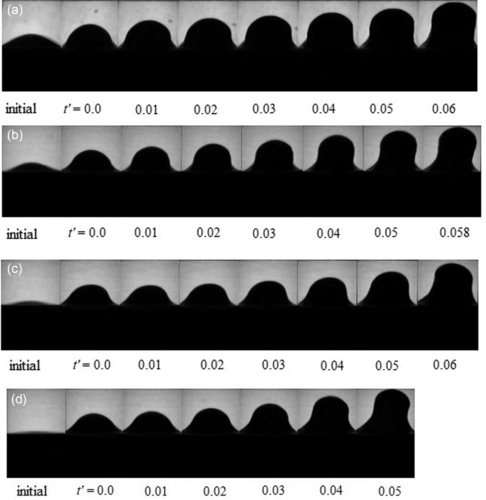Arindam Banerjee, an associate professor of mechanical engineering and mechanics, studies the dynamics of materials in extreme environments. He and his team have built several devices to effectively investigate the dynamics of fluids and other materials under the influence of high acceleration and centrifugal force.
One area of interest is Rayleigh-Taylor instability, which occurs between materials of different densities when the density and pressure gradients are in opposite directions, creating an unstable stratification.
“In the presence of gravity―or any accelerating field―the two materials penetrate one another like ‘fingers,’” says Banerjee.
According to Banerjee, the understanding of the instability is mostly confined to fluids (liquids or gases). Not much is known about the evolution of the instability in accelerated solids. The short time scales and large measurement uncertainties of accelerated solids make investigating this kind of material very challenging.
Banerjee and his team have succeeded in characterizing the interface between an elastic-plastic material and a light material under acceleration. They discovered that the onset of the instability―or “instability threshold”―was related to the size of the amplitude (perturbation) and wavelength (distance between crests of a wave) applied. Their results showed that for both two-dimensional and three-dimensional perturbations (or motions), a decrease in initial amplitude and wavelength produced a more stable interface, thereby increasing the acceleration required for instability.
These results are described in a paper published in Physical Review E called “Rayleigh-Taylor-instability experiments with elastic-plastic materials.” In addition to Banerjee, co-authors include Rinosh Polavarapu (a current Ph.D. student) and Pamela Roach (a former M.S. student) in Banerjee’s group.
“There has been an ongoing debate in the scientific community about whether instability growth is a function of the initial conditions or a more local catastrophic process,” says Banerjee. “Our experiments confirm the former conclusion: that interface growth is strongly dependent on the choice of initial conditions, such as amplitude and wavelength.”


